
DETECTION OF SUBSURFACE CONTAMINATION
VAPOR PHASE
COLLECTION
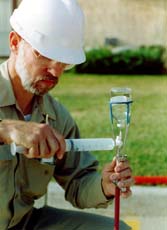
- Variable depth collection at depths of 4, 7, or 12 feet with manual hand probe
- Deeper depth collection up to 100 feet with geoprobe
ANALYSES

- Light gases (C1-C4)
- Gasoline Range Gases
- Carbon Dioxide
- Chlorinated Hydrocarbons
INTERPRETATION
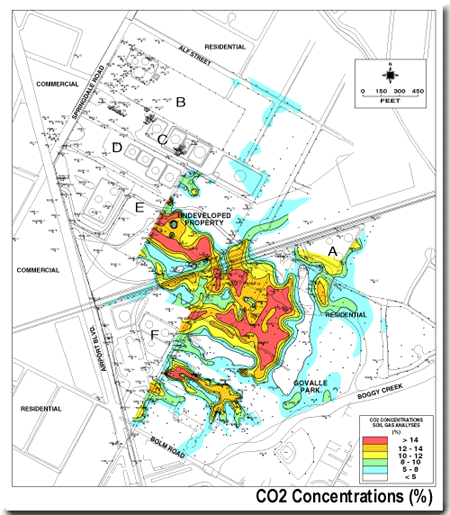
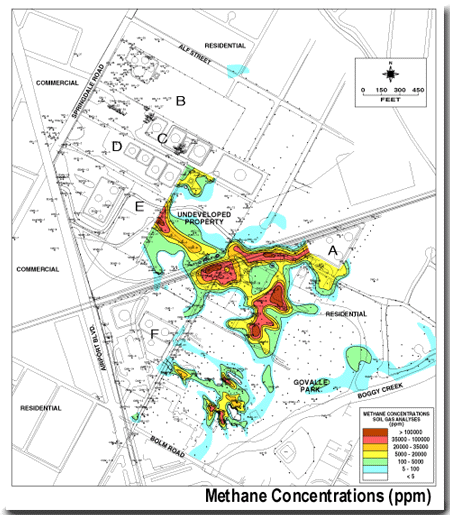
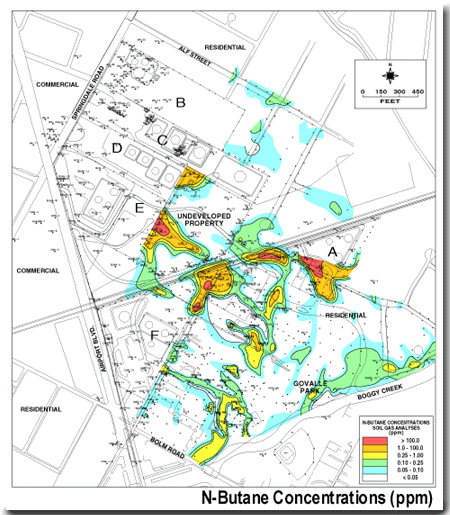
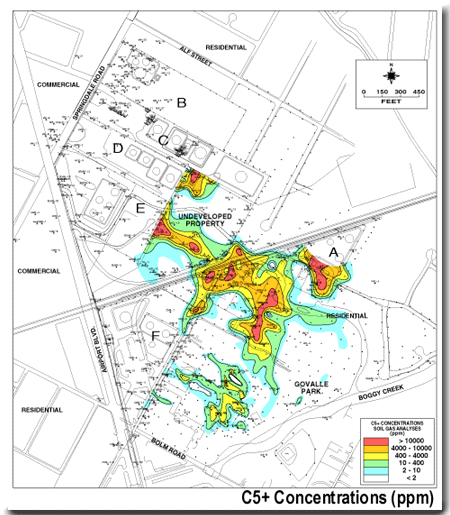
KEY CONCEPTS
- of the four phases of petroleum contamination, vapor phase contamination generally has the largest volumetric distribution, is close to the surface, is a recognized exposure pathway, and is the most cost-effective stage of environmental assessments.
- environmental site assessments should initially start with soil vapor surveys
- presence of methane and carbon dioxide gases confirm the process of anaerobic and aerobic biodegradation of the petroleum fuels in the subsurface
- locations for continuous soil borings should be selected from areas of maximum soil vapor concentrations